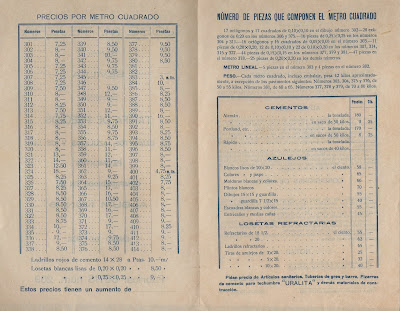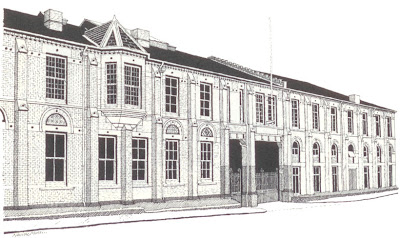Finally it's time I started to tell you about my great time in "The potteries" - the area of Stoke-on-Trent, Staffordshire.
I knew that the famous tile company of
Herbert Minton used to be there, so I went to the former adress to have a look.
Nun wird es endlich Zeit, dass ich von meiner Zeit in der Keramik-Gegend von Stoke-on-Trent, Staffordshire, erzähle.
Ich wußte, dass die berühmte Fliesenfabrik von Herbert Minton dort ihren Sitz hatte, also bin ich mal zu der alten Adresse gegangen um mich umzuschauen.
Por fin debe contaros sobre mi tiempo fantastico en "las cerámicas", en los alrededoresde Stoke-on-Trent, Staffordshire. Yo sabía que la fábrica famosa de Herbert Minton estuve por ahí y venía a la dirección antigua para hacer un vistazo.
On Shelton Old Road in Stoke is this enormous building:
In der Shelton Old Road in Stoke steht dieses imposante Gebäude:
En la calle Shelton Old Road se encuentra este edificio enorme:
today an office building, but still with the sign of the former company:
heute ein Bürogebäude, aber immer noch mit dem alten Firmenschild:
hoy día es un edificio de oficinas, pero lleva todavía el rótulo antiguo:
Minton Hollins & Co. was founded in 1845, when Herbert Minton entered into partnership with Michael Hollins. The tile factory was so successful that bigger premises were needed - those ones - built in 1869 by Charles Lynam.
Minton Hollins & Co. wurde 1845 gegründet, als Michael Hollins als Partner zu Herbert Minton kam. Die Fliesenfabrik war so erfolgreich, dass man schon bald größere Räumlichkeiten berauchte - dieses Gebäude wurde 1869 von Charles Lynam gebaut.
La empresa de Minton Hollins se fundó en 1845, cuando Michael Hollins entró en la empresa de Herbert Minton. La fábrica de azulejos fue tan exitosa, que pronto el sito antiguo quedó pequeño. Este edificio fue construido en 1869 de Charles Lynam.
Here I have found a great text, that I want to cite:
"
Originally, tile-making was carried on in premises in Church Street, Stoke, but owing to the development of trade and the popularity of the tiles, the works proved to be inadequate.
The existing building, covering an area of more than seven acres and employing more than 800 people, was erected with sufficient resources to meet the most pressing demands. On the long, clean, red-brick frontage many examples of their tiles are featured in a variety of designs, set either into panels over the windows or individually placed at regular intervals.
Hier habe ich einen interessanten Text gefunden, den ich übersetzen möchte:
"Ursprünglich wurden die Fliesen in dem Firmengebäude in der Church Street in Stoke hergestellt, aber aufgrund der Entwicklung des Handels und der Beliebtheit der Fliesen erwies es sich als ungeeignet. Das jetzige Gebäude, das eine Fläche von mehr als sieben Morgen bedeckt und mehr als 800 Leute beschäftigte, wurde mit genügenden Ressourcen errichtet um den dringenden Bedarf zu decken. An der Fassade des langen roten Ziegelgebäudes sind viele Beispiele ihrer Fliesen in verschiedenen Mustern dargestellt, entweder in Paneelen über den Fenstern oder einzelne Muster in regelmäßigen Abständen."
Aquí he encontrado un texto interesante, que quiero traducir:
"Originalmente se fabricaban los azulejos en la Church Street (calle de la iglesia) en Stoke, pero debido al desarollo de la venta y la popularidad de los azulejos la fábrica quedó inadecuada. La casa actual, que cubre una superficie de más de siete acres y empleando más de 800 personas, fue construida con recursos suficientes para satisfacer las demandas más urgentes. En la fachada del largo rojo edificio de ladrillos hay muchas muestras de sus azulejos sobre las ventanas o como muestras individuales."




